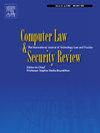敏捷和迭代治理:中国对人工智能的监管回应
IF 3.2
3区 社会学
Q1 LAW
引用次数: 0
摘要
生成式人工智能已经成为各个领域的流行语,以指数级的速度发展,深刻地改变了我们沟通和创新的方式。然而,它的潜在好处伴随着令人信服的道德和法律风险,需要适当的护栏来引导人工智能朝着有益的方向发展。在全球人工智能监管竞赛中,中国在塑造新兴的全球人工智能秩序方面表现出了强大而开放的雄心。为了应对人工智能带来的挑战,中国不仅在政策支持、中央协调和投资方面实施了敏捷的行政干预,而且采用了以“复杂性”、“敏捷性”、“稳定性”和“灵活性”为特征的人工智能治理框架。“然而,尽管灵活的、针对特定行业的人工智能治理方法可能会产生短期效益,但它会引发长期担忧,包括决策不透明、执行不力、监管分散以及对基本权利的保护不足。”特别是,以监管机构重叠和分层规则制定为特征的治理碎片化,可能会产生零碎和过时的法规,难以跟上快速的技术变革。目前的干预措施往往优先考虑系统稳定性,而不是道德清晰度和强有力的监督,而战略模糊性进一步使人工智能道德的实施复杂化,并阻碍了内部或行政上的有效监督。中国监管机构没有呼吁制定一套适用统一规则的综合性人工智能法,而是选择通过一套官僚知识和迭代监管工具,将横向要素调整为纵向监管。通过比较法律分析,本文发现,理解中国人工智能监管方法的复杂性不仅对于预测其未来的技术进步,而且对于理解其对国际技术竞争的影响至关重要。不同人工智能治理的差异可能提供有价值的见解,而人工智能治理价值观和原则的共性为负责任的人工智能治理的全球合作提供了希望。此外,我们有理由期望中国将在一个横向立法一揽子方案中协调现有的横向监管工具,而欧盟人工智能法案为从垂直的人工智能相关法规向横向的中国人工智能法的过渡提供了有价值的实践意义,而美国采用的分散监管方法为多利益相关者和多层次合作提供了有益的参考。此外,欧盟以权利为导向的框架和美国以市场为导向的模式可以作为关键的基准,影响中国以国家为导向的方法,以协调其立法战略,以响应人工智能监管。本文章由计算机程序翻译,如有差异,请以英文原文为准。
Agile and iterative governance: China’s regulatory response to AI
Generative AI has been a buzzword in various sectors, advancing at an exponential rate and profoundly transforming the way we communicate and innovate. However, its potential benefits come with compelling ethical and legal risks, necessitating proper guardrails steering AI in beneficial directions. Amid the global race to AI regulation, China has exhibited strong and open ambition in shaping the emerging global AI order. In response to challenges posed by AI, China has not only implemented agile administrative intervention in policy support, central coordination, and investment, but also adopted an AI governance framework that characterized by ‘complexity,’ ‘agility,’ ‘stability,’ and ‘flexibility.’ Nevertheless, while an agile, sector-specific approach to AI governance may yield short-term benefits, it raises long-term concerns, including opaque decision-making, weak enforcement, fragmented oversight, and inadequate protection of fundamental rights. In particular, governance fragmentation marked by overlapping regulatory bodies and layered rulemaking risks producing piecemeal and outdated regulations that struggle to keep pace with rapid technological change. Current interventions often prioritize systemic stability over ethical clarity and robust supervision, while strategic ambiguity further complicates the implementation of AI ethics and hinders effective oversight, whether internal or administrative.
Instead of calling for an omnibus AI law that applies a uniform package of rules, Chinese regulators chose to adapt horizontal elements into vertical regulations through a set of bureaucratic know-how and iterative regulatory tools. Through a comparative legal analysis, this paper finds that comprehending the intricacies of China’s AI regulatory approach is vital not only for projecting its future technological progression but also for understanding its impact on international tech competition. Differences in diverse AI governance may offer valuable insights while commonalities in AI governance values and principles hold promises for global cooperation in responsible AI governance. Moreover, it is plausible to expect that China will reconcile existing horizontal regulatory tools in a horizontal legislative package, while the EU AI Act provides valuable practical implications for the transition from vertical AI-related regulations to a horizontal Chinese AI Law, and the decentralized regulatory approach adopted by the U.S. serves as a useful reference for multi-stakeholder and multi-level cooperation. In addition, EU’s rights-driven framework and US’s market-driven model may serve as critical benchmarks, influencing China’s state-driven approach to harmonizing its legislative strategies for a responsive AI regulation.
求助全文
通过发布文献求助,成功后即可免费获取论文全文。
去求助
来源期刊
CiteScore
5.60
自引率
10.30%
发文量
81
审稿时长
67 days
期刊介绍:
CLSR publishes refereed academic and practitioner papers on topics such as Web 2.0, IT security, Identity management, ID cards, RFID, interference with privacy, Internet law, telecoms regulation, online broadcasting, intellectual property, software law, e-commerce, outsourcing, data protection, EU policy, freedom of information, computer security and many other topics. In addition it provides a regular update on European Union developments, national news from more than 20 jurisdictions in both Europe and the Pacific Rim. It is looking for papers within the subject area that display good quality legal analysis and new lines of legal thought or policy development that go beyond mere description of the subject area, however accurate that may be.

 求助内容:
求助内容: 应助结果提醒方式:
应助结果提醒方式:


